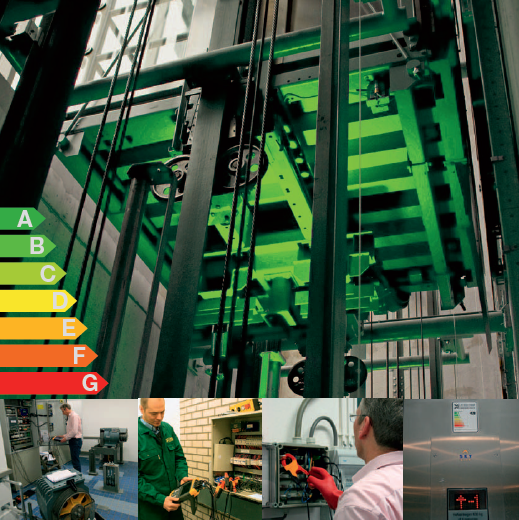"With the designation ‘energy efficient lift’, the lift manufacturer indicates that it has done everything possible to minimize energy consumption. However, how energy efficient the lift really is depends on the location and other factors.” The person speaking is Hessel Kramer, product specialist Certification at Liftinstituut. Every year he performs dozens of energy performance measurements on site.
 Energy performance measurement for BREEAM credits
Energy performance measurement for BREEAM credits
More and more property owners and building managers are attaching importance to providing transparency into their efforts to achieve more sustainable buildings. An energy efficient lift can contribute to the desired smaller ecological footprint. Kramer: “That is why we are increasingly being asked to subject the lift system to an energy performance measurement when a building is completed. If the result is favorable, the building is awarded more BREEAM credits. At the same time, such a measurement also provides insight into how quickly you can recoup the investment in an energy efficient lift.”
During the energy performance measurement, which takes about an hour, the certification specialist of Liftinstituut runs several test cycles, which measure power consumption in different situations. “We usually calculate the energy performance according to the formulas in the German standard VDI 4707 Part 1: 2009. Once in a while, we are asked to perform the measurement according to the international standard ISO 25745-2:2015. This formula and test procedures are a bit more complex, but the results are often almost the same and both measurement methods meets with wide-spread acceptance.”
Fixed parameters in the energy performance measurement
In the calculations the measured values from the test cycles combined with a number of fixed parameters result in the corresponding energy consumption and energy label. “In addition to the travel height, speed, balancing of the lift and load capacity, the type of control and settings also play a role in how energy efficient an lift is.”
Kramer carries out most energy performance measurements on lifts that have just been completed and are part of a new building: “We prefer to perform the measurements before the building is taken into use. This way, you don’t have to bother the building users by taking the lift out of service for a while. During the measurements, we are accompanied by the lift technician or installer.”
Lower energy consumption due to lift modification?
Kramer and his fellow certifiers are alos regularly asked for help with existing lifts: “Lift manufacturers and lift maintenance companies are increasingly offering building owners and/or operators the opportunity to make lifts in existing buildings more energy efficient. In order to provide insight into their efforts, they are happy to show the building manager and/or owner what such a modification yields in terms of energy consumption. In such a case, we perform a baseline measurement in advance and the final energy performance measurement afterwards.”
We are sometimes asked by building owners and/or managers to repeat the energy performance measurement: “A well-adjusted and maintained lift can still achieve the same energy performance a year after delivery. If the energy performance decreases, it may be necessary to place more emphasis on maintenance and adjustment. Not that this is always within your control: with a lift that stands still a lot, for instance, the guide rail rollers are flattened, which causes an increase in energy consumption.”
Comprehensive EPC report
Upon completion of the energy performance measurement, Liftinstituut issues the energy performance certificate (EPC). “This also includes the energy label and an extensive report. Our report contains all test data and our findings. This allows real estate owners, building managers, lift manufacturers and maintenance companies to have good insight in their product and take actions if necessary.”
“Good to know: we do not provide recommendations in the report. But if there are any questions about the results, we can always discuss these results and provide in general some solutions. For example, about the possible causes of higher energy consumption and how far away the result is from another label. This can be used, for example, to indicate that a lower consumption for the cabin lighting reduces the total consumption.”
Would you like more information about energy performance management? Feel free to make an appointment with account manager Dennis Lindeboom via +31 (6) 520 84 107 or international business manager Albert Jan van Ommen +31 (6) 512 43 395, or complete the contact form.





